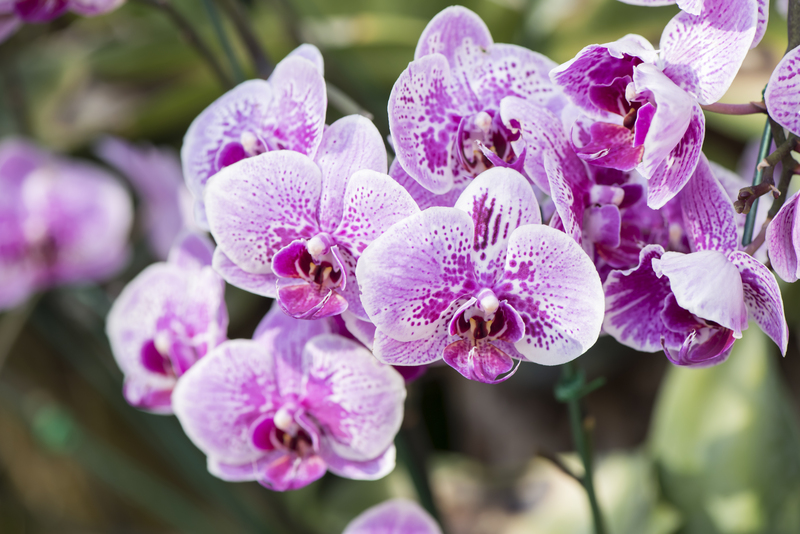Expert Advice for Shielding Lawns Against the Harsh Effects of Summer Drought
Summer droughts can take a severe toll on home lawns, leaving once lush, green grass parched and brown. High temperatures, scarce rainfall, and water restrictions are a potent combination that challenges even the most dedicated homeowners. However, professionals and lawn care experts agree that with the right strategies, you can protect your lawn from the worst effects of prolonged dry spells.
In this comprehensive guide, we'll explore expert advice for protecting lawns during summer droughts. We'll cover practical steps, proper lawn management techniques, the best drought-resistant grass types, and ways to ensure your lawn remains healthy and resilient throughout the hottest months.

Understanding the Impact of Summer Drought on Lawns
Before diving into solutions, it's important to know what happens to grass during a drought. A lack of water impedes grass growth and makes it more susceptible to pests, disease, and weed invasion. Some grasses enter a dormant state, turning brown but not dying, waiting for favorable moisture to return. Others may die off if drought is prolonged.
- Water Stress: Roots dry out, and grass blades wilt, losing their vibrant color.
- Soil Compaction: Dry, baked soil prevents water and nutrients from penetrating to the roots.
- Pest & Weed Problems: Weakened lawns are vulnerable to pests and aggressive weeds.
- Permanent Damage: Extended drought without proper care can kill large patches of grass.
1. Choose Drought-Tolerant Grass Species
One of the best long-term strategies for defending lawns from extreme summer dryness is to select grass varieties that naturally withstand drought better. Consider overseeding or replacing your lawn with one of these options:
- Bermuda grass: Exceptionally heat and drought-tolerant, ideal for southern climates.
- Zoysia grass: Thrives in heat and forms a dense, deep-rooted lawn.
- Tall Fescue: Best cool-season grass for drought, with deep roots for water access.
- Buffalograss: Native to prairie climates, it requires minimal irrigation.
Expert tip: Each grass has different maintenance needs. Choose a type that matches your local climate and soil for optimal drought resistance.
Why Drought-Resistant Grass Matters
Drought-resistant (or drought-tolerant) grasses bounce back quickly after dry spells and require less water overall--making them the first line of defense in shielding lawns from drought damage.
2. Water Wisely: Optimize Irrigation Practices
When water is precious, it's vital to use every drop efficiently. Here's how experts recommend watering lawns during drought:
- Water deeply, not frequently: Apply 1 to 1.5 inches of water per week in one or two deep sessions instead of shallow daily watering. This encourages grass roots to grow deeper, seeking out moisture from below.
- Water early morning: Watering between 4-9 a.m. minimizes evaporation and helps prevent fungal diseases.
- Avoid wetting hardscapes: Position sprinklers so water doesn't fall on sidewalks or driveways.
- Don't overwater: Grass in dormant drought mode won't respond to extra water. Stick to just enough to sustain the roots.
Smart Irrigation Tools
Upgrade your irrigation system. Smart timers, soil moisture sensors, and efficient sprinkler heads can cut water usage dramatically while ensuring your lawn gets what it needs. These systems also comply with local water restriction regulations during droughts.
3. Mow for Drought Survival
Mowing routines can strengthen or weaken your lawn's ability to withstand drought. Lawn care specialists recommend adjusting these practices:
- Raise your mowing height: Taller grass shades soil and roots, reducing water loss and evaporation. Set mower blades to 3 inches or higher.
- Keep blades sharp: Dull blades tear grass, increasing stress and vulnerability to disease in dry, hot conditions.
- Leave grass clippings: Mulching clippings as you mow returns moisture and nutrients to the soil, forming a natural protective layer.
Pro tip: If grass growth slows considerably, mow less often or not at all. Over-mowing stresses grass already struggling with drought.
4. Enhance Soil Health and Water Retention
Soil is the foundation of a drought-tolerant lawn. Take these expert-recommended steps to boost water retention and promote healthy grass growth:
- Core aeration: Aerate the lawn in spring or fall to relieve soil compaction and let water, air, and nutrients reach the roots.
- Add organic matter: Top-dress with a thin layer of compost to increase soil's water-holding capacity.
- Apply mulch: Use mulch or grass clippings to keep soil cool and reduce evaporation.
- Test your soil: Soil tests reveal nutrient levels and pH so you can amend for optimal grass health and water uptake.
Don't Forget About Fertilizer
Skip fertilizers during peak drought. Applying fertilizer when grass is dormant can burn the lawn and worsen drought damage. Fertilize only in the spring or fall, and use organic, slow-release formulas that are less likely to leach away.
5. Combat Summer Weeds and Pests
Weeds and pests thrive where grass is weak, especially during drought. Staying vigilant is crucial to protect your lawn:
- Hand-pull weeds: Minimize chemical use in hot, dry weather to avoid further stress on grass.
- Spot-treat as needed: Use targeted, drought-safe herbicides or organic solutions for stubborn infestations.
- Monitor for pests: Look for signs of chinch bugs, grubs, or other lawn insects that appear when grass is water-stressed.
Tip: Healthy, thick lawns are your first defense! Dense turf crowds out weeds naturally and resists pest invasion.
6. Practice Lawn Conservation During Drought Restrictions
During severe droughts, local municipalities may restrict lawn watering or limit usage to certain days. Here's how to help your lawn survive water shortages:
- Let grass go dormant: Many grasses naturally brown and stop growing but will recover when rains return.
- Avoid heavy foot traffic: Dry, brittle grass is more easily damaged by frequent use.
- Minimize activities: Pause robust lawn care tasks like aeration, dethatching, or over-seeding during heatwaves.
When To Water Under Restrictions
If allowed only limited irrigation, prioritize shady spots and highest-value areas. Encourage dormancy everywhere else. Grass can survive 4-6 weeks of drought dormancy without permanent damage if the crowns and roots remain alive.
7. Consider Lawn Alternatives and Xeriscaping
For areas under chronic drought or where water is always scarce, rethinking your traditional lawn can be the ultimate drought-proofing solution. Xeriscaping is a landscaping approach that emphasizes water conservation through:
- Drought-tolerant groundcovers and native plants
- Mulched planting beds
- Decorative stones or gravel pathways
- Efficient drip irrigation
These low-water landscapes dramatically reduce the need for irrigation while offering beauty and habitat for pollinators and local wildlife.
8. Preventative Maintenance: Year-Round Lawn Care for Drought Resistance
The most drought-resilient lawns are those cared for all year long. Follow these ongoing maintenance practices:
- Regularly aerate and amend soil for optimal root health
- Control thatch buildup so water and nutrients can penetrate quickly
- Overseed or reseed with drought-resistant varieties annually
- Fertilize and lime appropriately per soil test results
- Remove debris, fallen leaves, and prevent heavy compaction from traffic
Remember: A thick, well-cared-for lawn is always the best defense against drought, disease, and weeds.

Expert FAQs for Lawn Care During Drought
- How much should I water my lawn during drought?
Water only when absolutely necessary, providing about 1 inch per week if permitted, and only in the early morning for best results. - Should I fertilize during a drought?
No: Fertilizer can damage inactive or stressed grass. Wait until cooler weather or rainfall returns before fertilizing. - Will my lawn recover after a summer drought?
Most cool-season and warm-season grasses can recover if roots and crowns survive. Dormant grass may regreen with rain and care. - Can I mow brown grass?
Avoid mowing dormant brown grass. Wait until growth resumes, and always mow at a higher setting during drought periods.
Conclusion: Safeguarding Your Lawn from the Ravages of Summer Drought
Shielding lawns against summer drought requires proactive care, smart water management, and possibly reconsidering your grass type or landscaping style. By following expert-recommended procedures--choosing drought-tolerant varieties, optimizing irrigation, mowing responsibly, and practicing year-round maintenance--you can help your lawn endure even the harshest summer conditions.
Don't forget, a healthy, well-prepared lawn is much more resilient and attractive, even when Mother Nature doesn't cooperate. Implement these expert tips this season and enjoy a vibrant green space, no matter how dry the summer gets.
For further reading: Explore university cooperative extension guides and local lawn care experts for advice specific to your region's climate and soil needs.